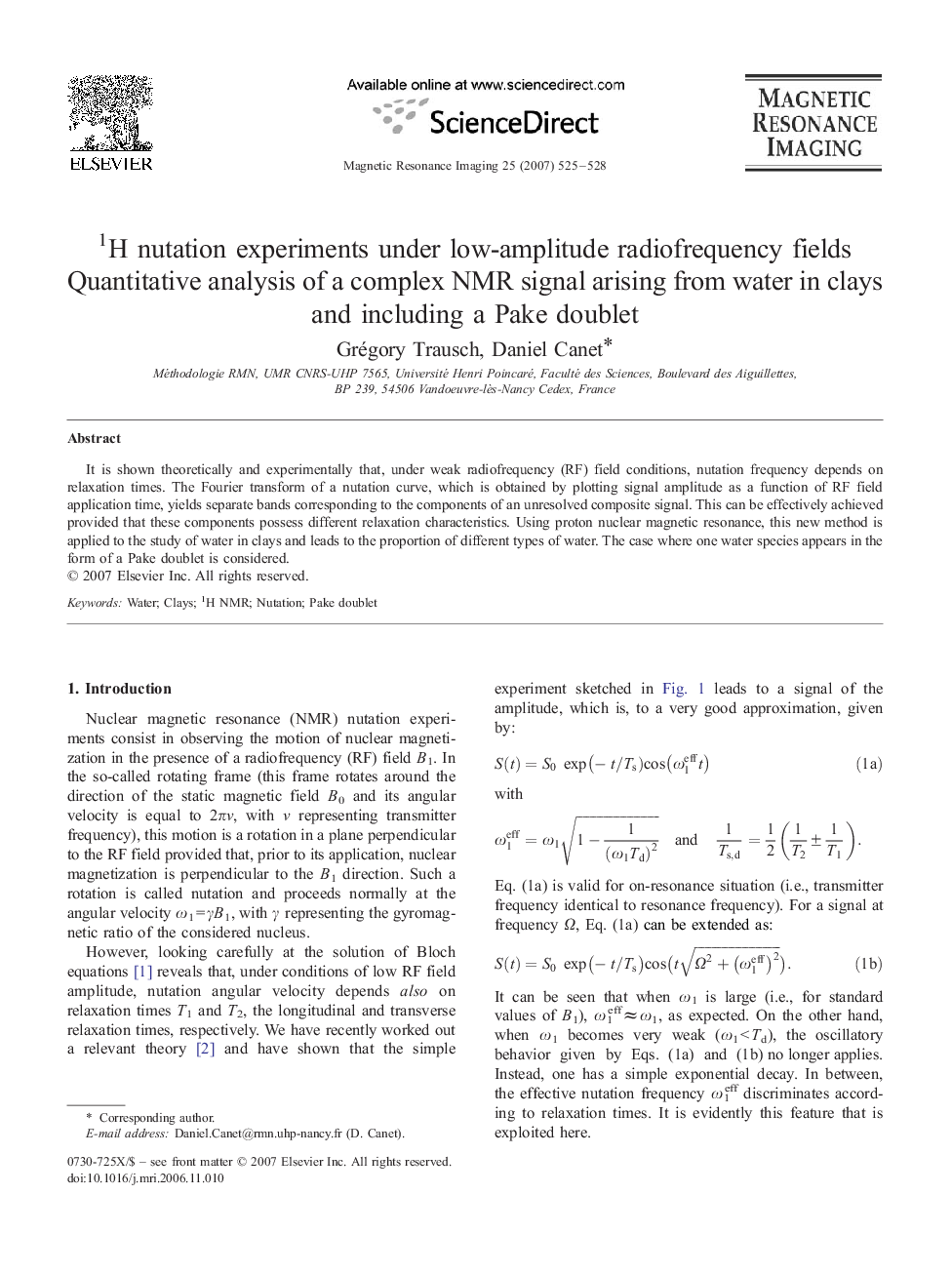| Article ID | Journal | Published Year | Pages | File Type |
|---|---|---|---|---|
| 1807794 | Magnetic Resonance Imaging | 2007 | 4 Pages |
Abstract
It is shown theoretically and experimentally that, under weak radiofrequency (RF) field conditions, nutation frequency depends on relaxation times. The Fourier transform of a nutation curve, which is obtained by plotting signal amplitude as a function of RF field application time, yields separate bands corresponding to the components of an unresolved composite signal. This can be effectively achieved provided that these components possess different relaxation characteristics. Using proton nuclear magnetic resonance, this new method is applied to the study of water in clays and leads to the proportion of different types of water. The case where one water species appears in the form of a Pake doublet is considered.
Related Topics
Physical Sciences and Engineering
Physics and Astronomy
Condensed Matter Physics
Authors
Grégory Trausch, Daniel Canet,
